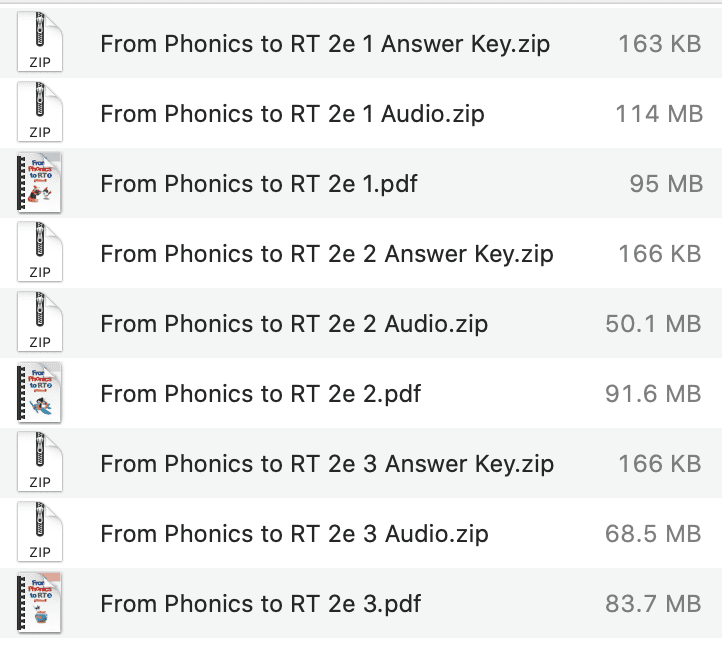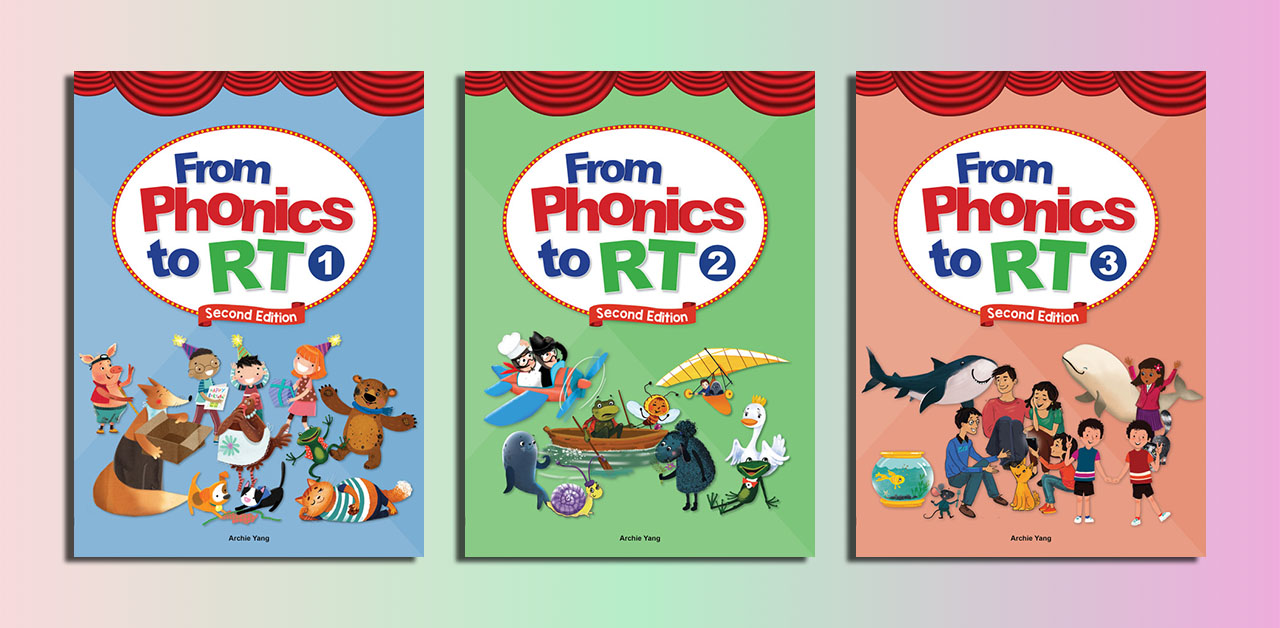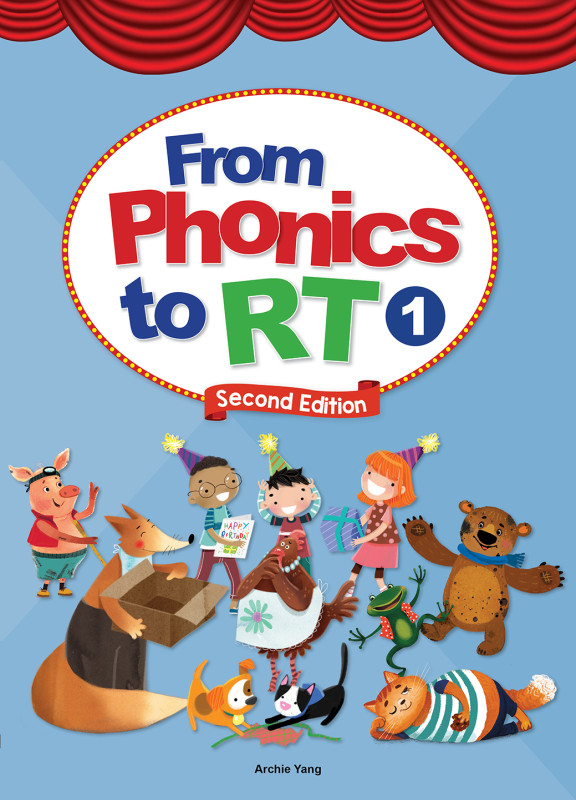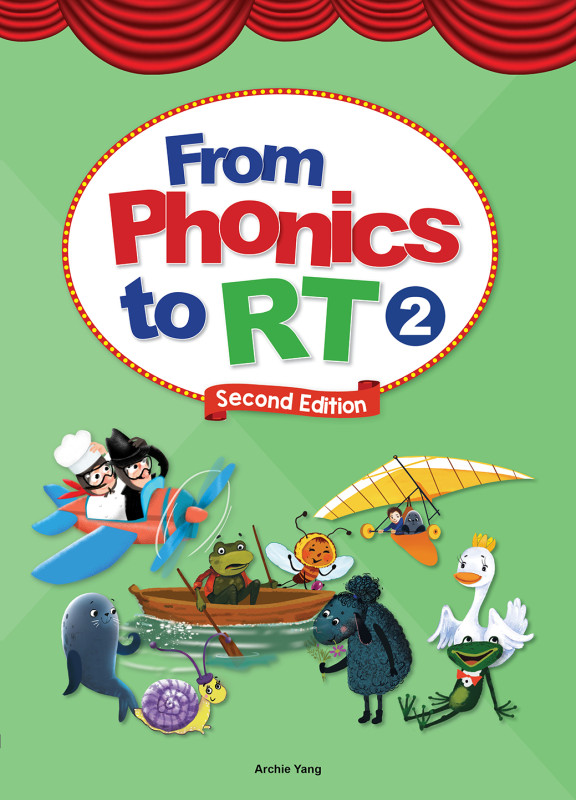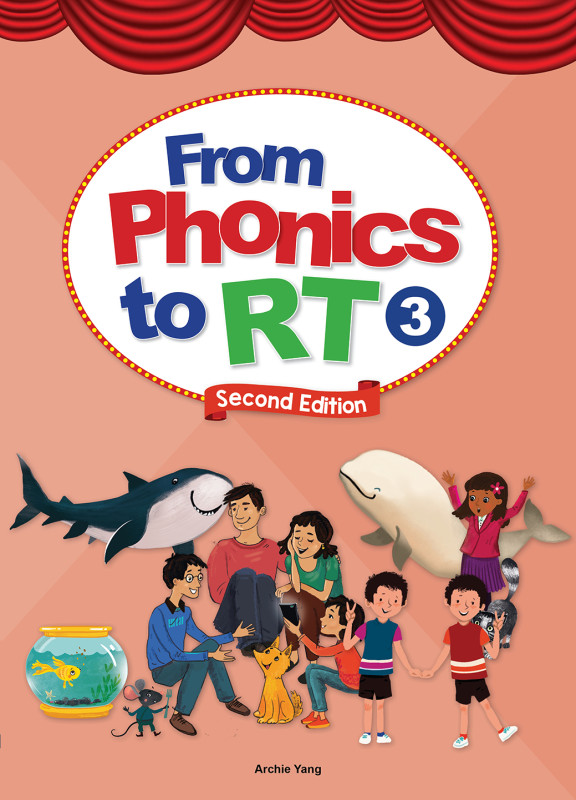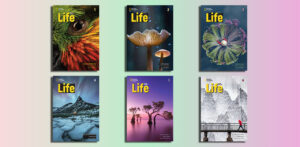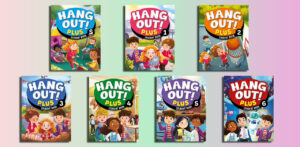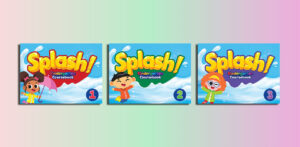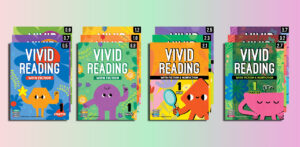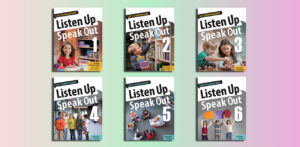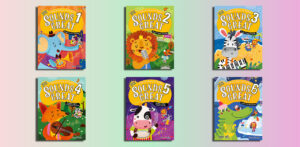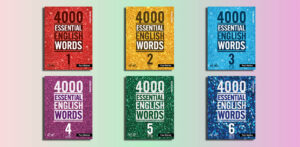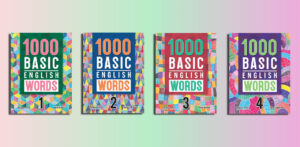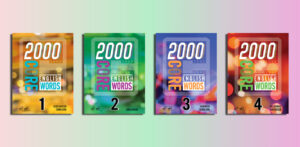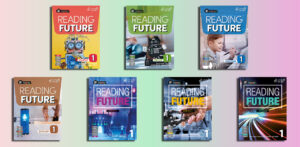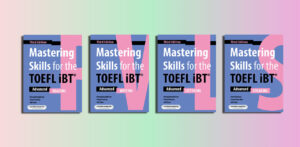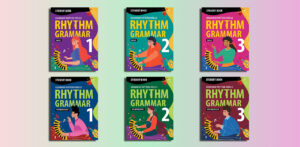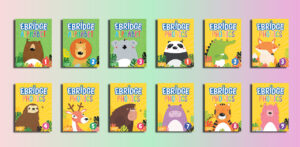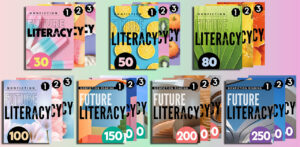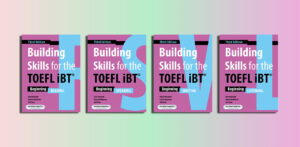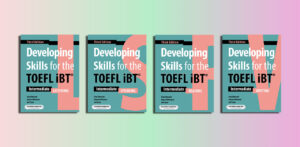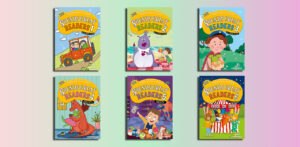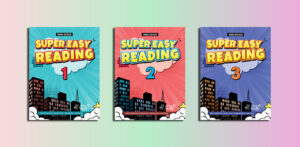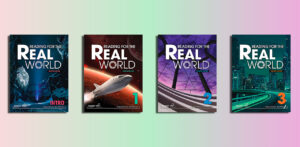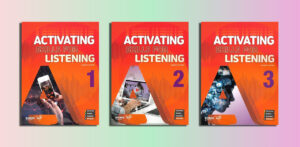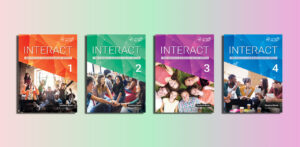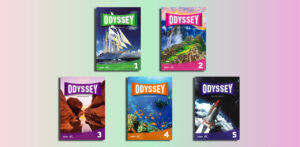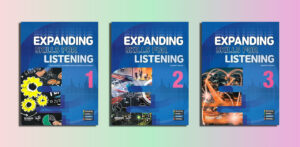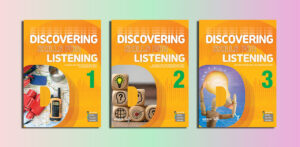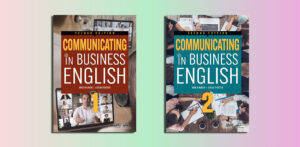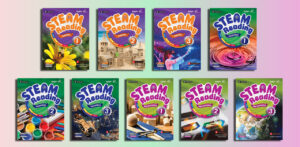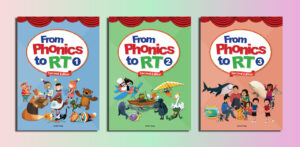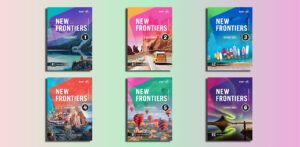From Phonics to RT Second Edition (PDFs, Resources)
Level 1 (Pre A1)
From Phonics to RT 2e 1 Answer Key.zip
From Phonics to RT 2e 1 Audio.zip
From Phonics to RT 2e 1.pdf – Sample: Click
Level 2 (Pre A1)
From Phonics to RT 2e 2 Answer Key.zip
From Phonics to RT 2e 2 Audio.zip
From Phonics to RT 2e 2.pdf – Sample: Click
Level 3 (Pre A1)
From Phonics to RT 2e 3 Answer Key.zip
From Phonics to RT 2e 3 Audio.zip
From Phonics to RT 2e 3.pdf – Sample: Click
Overview of “From Phonics to RT Second Edition” by Compass Publishing
Contents
| ✅ Coursebook: | From Phonics to RT Second Edition |
| ✅ Publisher: | Compass Publishing |
| ✅ Levels: | Pre A1 |
| ✅ English type: | International English |
| ✅ For: | Primary School, Kindergarten, Elementary, Phonics, Preschool |
| ✅ Publication year: | 2019 |
“From Phonics to RT Second Edition” is a comprehensive educational series published by Compass Publishing, a South Korea-based company specializing in English language teaching (ELT) materials for young learners. This second edition is designed as a progressive phonics program that bridges foundational phonics skills with early reading and writing abilities, helping students transition from basic sound recognition to fluent reading (with “RT” likely standing for “Reading Tutor” or a similar reading-focused component). It is part of Compass Publishing’s broader lineup of phonics and reading resources, such as Reading Oceans™ Phonics and Fast Phonics, aimed at elementary-level EFL/ESL students, particularly in international and Asian markets. The series emphasizes systematic instruction to build confidence in reading through structured lessons, activities, and real-world application.
Target Audience and Levels
- Age Group/Grade Level: Primarily for young learners, from kindergarten to early elementary (ages 5–8 or grades K–2), with a focus on beginners or students needing foundational literacy support. It is suitable for both native English speakers and English language learners (ELLs) in classroom or tutoring settings.
- Structure: The series is divided into multiple levels (likely 3–6 books, based on similar Compass phonics programs like Sounds Great Second Edition, which has six levels). Each level builds progressively:
- Early levels focus on letter recognition, short vowels, and basic blends.
- Mid-levels introduce long vowels, digraphs, and simple sentences.
- Advanced levels incorporate r-controlled vowels, multisyllabic words, and connected reading passages.
- CEFR Alignment: Corresponds to pre-A1 to A1 levels (beginner), aligning with Compass’s other series for young learners.
The program is flexible for use in whole-class instruction, small groups, or individual tutoring, with an emphasis on scaffolding skills to prevent gaps in literacy development.
Key Features and Components
Based on Compass Publishing’s phonics methodology (drawn from their catalog descriptions of similar titles like Reading Oceans™ Phonics and Jungle Phonics), the series incorporates research-based practices for foundational skills. Core features include:
- Systematic Phonics Instruction: Lessons follow a scope and sequence that introduces sounds explicitly, with repeated modeling, blending drills, and decoding practice. This embodies elements of the “Science of Reading,” including phonological awareness, phonics, fluency, vocabulary, and comprehension (the “Big Five” components).
- Interactive Activities: Each unit includes games, chants, songs, flashcards, and hands-on exercises to engage young learners and promote retention. Activities encourage creativity, motor skills development, and peer interaction.
- Reading Integration: Students apply phonics immediately through decodable readers, mini-books, and controlled texts. This helps transition from isolated sounds/words to meaningful reading, with a focus on high-frequency words and simple stories.
- Multimedia Support: Includes audio CDs or digital components (e.g., Hybrid CDs with chants, karaoke, coloring pages, and games). Compass often integrates tools like Class Booster for online practice, allowing for independent work or homework.
- Assessment and Review: Built-in progress checks, placement tests, dictation exercises, and recycling of concepts to ensure mastery. Teachers can track student progress through embedded assessments.
- Teacher Resources: Teacher’s guides provide lesson plans, pacing suggestions, scripting for explicit instruction, differentiation tips for diverse learners (including ELL support), and professional development notes. Student books are consumable worktexts with tear-out cards and take-home materials.
- Cultural and Contextual Relevance: Content is age-appropriate with colorful illustrations, themes from everyday life, nursery rhymes, and non-fiction elements to make learning fun and relatable. It avoids overwhelming “moving parts,” keeping the program straightforward for busy educators.
The second edition likely includes updates such as enhanced digital integration, refined scope and sequence based on user feedback, and alignment with global standards like the Common Core or international benchmarks for foundational skills.
From Phonics to RT 1 Second Edition
Who is suitable for “From Phonics to RT Second Edition”?
“From Phonics to RT Second Edition” by Compass Publishing is suitable for:
- Young Learners (Ages 5–8): Primarily kindergarten to early elementary students (grades K–2) who are beginning to learn English reading and writing.
- English Language Learners (ELLs): Non-native English speakers in EFL/ESL settings, particularly in international or Asian markets, needing foundational literacy skills.
- Beginner Readers: Students at pre-A1 to A1 CEFR levels, focusing on letter recognition, phonics (short/long vowels, blends, digraphs), and early reading fluency.
- Struggling Readers: Learners requiring structured, systematic phonics support to build confidence and close literacy gaps.
- Classroom or Tutoring Settings: Suitable for whole-class instruction, small groups, or one-on-one tutoring, with resources for teachers and parents.
- Diverse Learners: The program’s engaging activities (games, songs, decodable readers) and scaffolding make it adaptable for varied learning needs, including those needing extra support in phonological awareness or decoding.
It’s ideal for educators seeking a research-based, interactive phonics program to foster reading fluency in young or beginner English learners.
From Phonics to RT 2 Second Edition
The benefits of “From Phonics to RT Second Edition”
The benefits of “From Phonics to RT Second Edition” by Compass Publishing, based on its design as a systematic phonics and reading program for young learners, include:
- Strong Foundational Literacy Skills: The program builds phonological awareness, phonics, and decoding through a structured scope and sequence, enabling students to master letter-sound relationships, blends, digraphs, and high-frequency words, aligning with evidence-based reading practices (e.g., the Science of Reading’s “Big Five” components).
- Improved Reading Fluency: Decodable readers and controlled texts allow students to apply phonics skills immediately, transitioning from isolated sounds to reading meaningful sentences and stories, fostering fluency and comprehension.
- Enhanced Spelling and Writing: Practice with word-building and dictation exercises strengthens spelling skills, while activities like tracing or writing reinforce letter formation and early writing confidence.
- Engagement and Motivation: Interactive elements such as games, chants, songs, and colorful illustrations make learning fun, keeping young learners (ages 5–8) motivated and reducing anxiety for struggling readers or English language learners (ELLs).
- Confidence Building: Progressive lessons ensure mastery of skills before advancing, helping students, especially beginners (pre-A1 to A1 CEFR levels), gain confidence in reading and speaking English.
- Support for Diverse Learners: Scaffolding and differentiation in the teacher’s guide accommodate varied learning needs, making it effective for both native speakers and ELLs in classroom or tutoring settings.
- Time-Efficient for Educators: Ready-to-use lesson plans, minimal-prep activities, and resources like audio CDs, flashcards, and digital tools (e.g., Class Booster) streamline teaching, allowing focus on instruction rather than planning.
- Holistic Skill Development: Combines phonics with vocabulary, comprehension, and real-world themes, promoting not just decoding but also understanding and enjoyment of reading.
- Long-Term Reading Success: By emphasizing repeated practice and recycling of concepts, the program ensures retention and automaticity, setting students up for sustained literacy growth.
- Parental Involvement: Take-home materials and simple activities enable parents to support learning at home, reinforcing classroom progress.
These benefits, drawn from Compass Publishing’s phonics program descriptions (e.g., Sounds Great, Reading Oceans™ Phonics), make the series a robust tool for building early literacy in young or beginner English learners.
From Phonics to RT 3 Second Edition
Effective learning strategies for “From Phonics to RT Second Edition”
To maximize the effectiveness of “From Phonics to RT Second Edition” by Compass Publishing, a systematic phonics and reading program for young learners (ages 5–8, pre-A1 to A1 CEFR levels), educators, tutors, and parents can employ the following evidence-based learning strategies. These strategies align with the program’s structure, which emphasizes phonological awareness, decoding, fluency, and early reading comprehension, while leveraging its interactive components like chants, games, decodable readers, and digital tools.
1. Explicit and Systematic Instruction
- Strategy: Follow the program’s scope and sequence diligently, introducing one phonics concept at a time (e.g., short vowels, then blends, then digraphs). Use the teacher’s guide for scripted lessons to model sounds clearly, demonstrate blending, and guide practice.
- Application: Begin each lesson with explicit modeling (e.g., “This is the sound /a/ as in ‘apple’”). Use the provided audio CDs or digital tracks for accurate pronunciation, especially for non-native English teachers or ELL students. Have students repeat sounds and blend them into words (e.g., /c/ /a/ /t/ → “cat”).
- Why It Works: Research from the Science of Reading shows explicit phonics instruction builds strong decoding skills, critical for early readers.
2. Scaffolded Practice with Gradual Release
- Strategy: Use the “I Do, We Do, You Do” model to transition from teacher-led to independent practice. Start with guided activities, then move to collaborative tasks, and finally let students work alone.
- Application: For example, in a lesson on short vowels, the teacher models reading a decodable text (I Do), students read together with the teacher or peers (We Do), and then students read independently or complete workbook exercises (You Do). Use the program’s flashcards or mini-books for hands-on practice.
- Why It Works: Scaffolding builds confidence and ensures mastery, particularly for struggling readers or ELLs, by providing support before independence.
3. Incorporate Multisensory Activities
- Strategy: Engage multiple senses (visual, auditory, kinesthetic) to reinforce phonics concepts, catering to diverse learning styles.
- Application: Use the program’s songs and chants to reinforce sounds auditorily (e.g., singing the short vowel song). Have students trace letters in the air or on paper for kinesthetic learning. Pair visuals from the student book (e.g., colorful illustrations of “cat” or “dog”) with word-building activities using letter cards. For example, students can physically arrange cards to form words like “pen” or “hat.”
- Why It Works: Multisensory learning strengthens neural connections, improving retention for young learners, as supported by studies on Orton-Gillingham-based approaches.
4. Leverage Interactive and Game-Based Learning
- Strategy: Use the program’s games and interactive components to make learning engaging and reinforce skills through play.
- Application: Incorporate the provided board games, matching activities, or digital games (via Class Booster or Hybrid CDs) into lessons. For example, play a phonics bingo game where students match sounds (e.g., /b/) to pictures (e.g., “ball”). Use group activities like “sound scavenger hunts” where students find objects in the classroom matching target sounds.
- Why It Works: Gamification increases motivation and reduces learning anxiety, especially for young or beginner learners, as engagement enhances memory retention.
5. Focus on Repeated and Spaced Repetition
- Strategy: Utilize the program’s review sections and recycling of concepts to reinforce learning over time, spacing practice to prevent forgetting.
- Application: Revisit previously taught sounds or words in warm-up activities or through the program’s built-in review units. For example, after teaching short vowels, include a quick review of /a/ and /e/ sounds in later lessons on blends. Use dictation exercises to test recall and spelling of high-frequency words.
- Why It Works: Spaced repetition, backed by cognitive science, strengthens long-term retention and automaticity in decoding.
6. Encourage Reading Application with Decodable Texts
- Strategy: Prioritize the program’s decodable readers and mini-books to connect phonics to real reading, building fluency and comprehension.
- Application: After teaching a phonics rule (e.g., consonant blends like “bl” or “st”), have students read a decodable story featuring those patterns (e.g., “Stan and the Black Cat”). Guide them to sound out words first, then read for meaning, discussing simple story elements (e.g., “Who is Stan?”). Pair students for partner reading to boost confidence.
- Why It Works: Decodable texts ensure students practice only the skills they’ve learned, reinforcing phonics while building reading stamina, as recommended by literacy experts like Timothy Shanahan.
7. Differentiate for Diverse Learners
- Strategy: Adapt lessons to meet varied needs, using the teacher’s guide suggestions for differentiation and the program’s flexible activities.
- Application: For advanced learners, extend activities by having them write short sentences using target words (e.g., “The cat is fat”). For struggling learners or ELLs, provide extra modeling, use visuals heavily, or simplify tasks (e.g., focus on one sound per lesson). Use the placement tests to group students by skill level for small-group work.
- Why It Works: Differentiation ensures all learners progress, addressing gaps for struggling readers and challenging stronger ones, aligning with inclusive teaching practices.
8. Integrate Digital Tools for Reinforcement
- Strategy: Use the program’s digital components (e.g., Class Booster, Hybrid CDs) for interactive practice and homework to extend learning beyond the classroom.
- Application: Assign online activities like sound-matching games or karaoke-style chants for home practice. Use the digital platform to track progress and identify areas needing review. Encourage parents to engage with take-home materials or digital exercises to reinforce lessons.
- Why It Works: Technology enhances engagement and provides immediate feedback, supporting independent learning and parental involvement.
9. Monitor Progress with Assessments
- Strategy: Regularly use the program’s built-in assessments (e.g., progress checks, dictation tasks) to track student mastery and adjust instruction.
- Application: Administer placement tests at the start to determine starting levels, then use unit quizzes to assess specific skills (e.g., decoding short vowel words). Provide feedback and reteach concepts as needed, using review activities or extra practice pages.
- Why It Works: Ongoing assessment ensures no skill gaps form, aligning with formative assessment principles to guide instruction.
10. Foster a Positive Reading Culture
- Strategy: Create an encouraging environment that celebrates reading progress, using the program’s relatable themes and stories to spark interest.
- Application: Praise small successes (e.g., “You read ‘dog’ all by yourself!”) and display student work, like completed mini-books. Use the program’s nursery rhymes or real-world themes (e.g., animals, family) to connect reading to students’ lives, encouraging them to share related experiences.
- Why It Works: A positive, supportive atmosphere boosts motivation and fosters a love for reading, critical for long-term literacy success.
Tips for Implementation
- Consistency: Teach short, daily lessons (15–20 minutes) to maintain momentum, as young learners benefit from frequent, focused practice.
- Parental Involvement: Share take-home materials or simple instructions with parents to reinforce phonics at home (e.g., practicing flashcards or reading decodable texts together).
- Cultural Relevance: For ELLs, connect the program’s themes to students’ cultural contexts (e.g., discussing local animals when teaching words like “cat” or “dog”).
- Professional Development: Teachers new to phonics should review the teacher’s guide notes or Compass Publishing’s online resources for best practices in phonics instruction.
These strategies, grounded in the program’s design and evidence-based literacy practices, ensure “From Phonics to RT Second Edition” effectively builds phonics, fluency, and reading confidence in young learners or ELLs.

